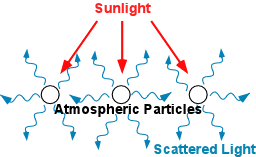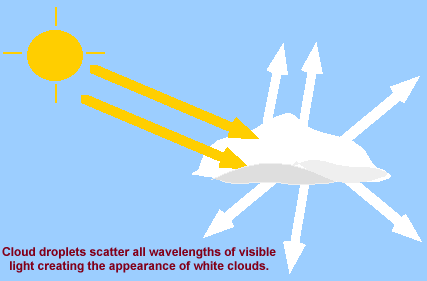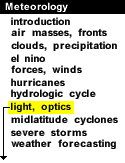
|
Different from reflection, where radiation is deflected in one direction, some particles and molecules found in the atmosphere have the ability to scatter solar radiation in all directions. The particles/molecules which scatter light are called scatterers and can also include particulates made by human industry.

Selective scattering (or Rayleigh scattering) occurs when certain particles are more effective at scattering a particular wavelength of light. Air molecules, like oxygen and nitrogen for example, are small in size and thus more effective at scattering shorter wavelengths of light (blue and violet). The selective scattering by air molecules is responsible for producing our blue skies on a clear sunny day.
Another type of scattering (called Mie Scattering) is responsible for the white appearance of clouds. Cloud droplets with a diameter of 20 micrometers or so are large enough to scatter all visible wavelengths more or less equally. This means that almost all of the light which enters clouds will be scattered. Because all wavelengths are scattered, clouds appear to be white.

When clouds become very deep, less and less of the incoming solar radiation makes it through to the bottom of the cloud, which gives these clouds a darker appearance.

reflection |
|

Refraction |




